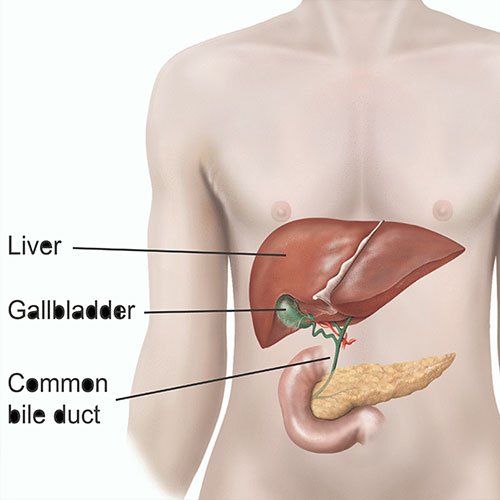


The common bile duct (CBD) is a vital structure in the human digestive system that plays a key role in the transportation of bile, a fluid produced by the liver to aid in the digestion and absorption of fats. The common bile duct is formed by the union of the cystic duct (from the gallbladder) and the common hepatic duct (from the liver). After merging, it travels downward, passing through the pancreas, and eventually empties into the small intestine at the duodenum.
Bile produced by the liver is initially stored in the gallbladder and released into the common bile duct when needed, typically after a meal rich in fats. Once in the intestine, bile helps emulsify fats, making them easier to break down and absorb. The CBD is thus essential for fat metabolism and overall digestive health.

Obstructions in the common bile duct, like gallstones, tumors, or strictures (narrowing of the duct), can lead to various health issues, including jaundice (yellowing of the skin and eyes due to bile buildup), cholangitis (infection of the bile duct), and pancreatitis (inflammation of the pancreas). These conditions may require treatments such as medication, endoscopic removal of stones, or even surgery to restore normal bile flow.
Understanding the structure and function of the common bile duct is crucial in diagnosing and managing digestive and liver-related conditions, as any obstruction can lead to significant health complications.
